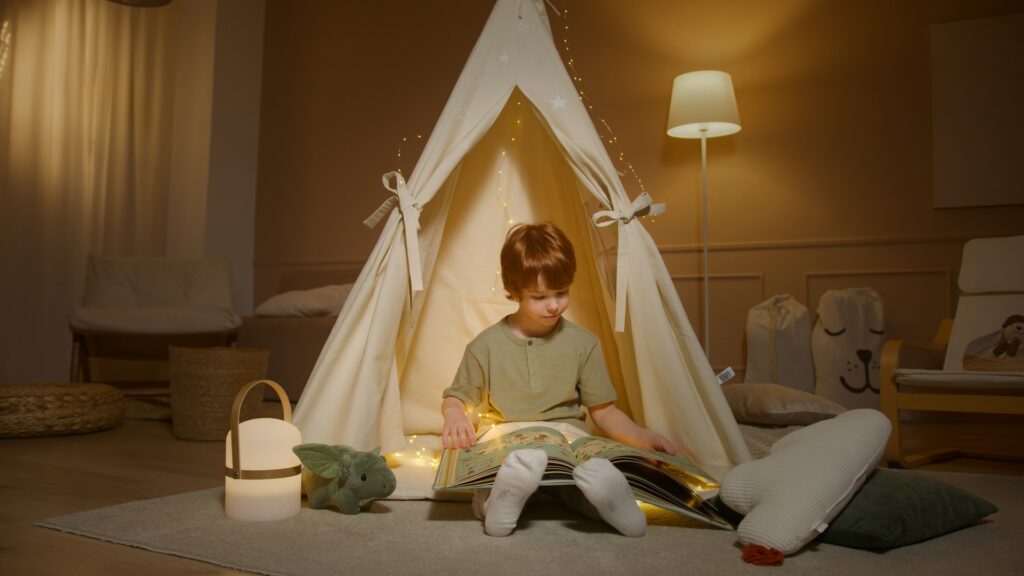The term “bedtime story” was originally created in 1873 by Louise Chandler Moulton in her book, “Bed-time Stories”. The ritual of adults reading to children before bedtime started to gain prominence toward the later 19th century, and really grew in popularity during the 20th century. The tradition resulted from and negotiated diverse phenomena: not only the growth of the illustrated book industry but also the the prominence of placing children in their own, separate bedrooms, as well as the the expansion of electricity and heating systems that shifted evening reading beyond the hearth to other domestic spaces. Moreover, psychologists started recommending that children need bedtime stories to sleep and develop better. Parents’ reading to children at nighttime became a symbol of proper parenting and was idealised middle- class society.
Reading bedtime stories yields multiple benefits for parents and children alike. Listening to s story before sleep can lead to better sleep for a child, language development and improvement in logical thinking. Due to this, the phenomenon of the children’s bedtime story has remained, and is still somewhat of a tradition today. Moreover, The storyteller-listener relationship creates an emotional bond between the parent and the child, helping the child to develop a deeper relationship with the parent. Additionally, due to “the strength of the imitative instinct” of a child, the stories can also become a model for the child to follow, making it a good time for moral lessons as well.
While written storytelling has become more prominent in the last two centuries, verbal storytelling is as old as language itself. Aesop for example was a greek author and storyteller, credited with a number of fables now collectively known as Aesop’s Fables, was active in ancient Greece over 2500 years ago. The ancient Egyptians also had nighttime stories written in hieroglyphs, and so did the Norse Vikings in the 900s, today collectively referred to as Norse Mythology.
Storytelling, and in particular verbal storytelling as an art-form as old as language itself. For generations we have told stories to one another and to children before bedtime. While stories have always been around, it was not until the later 19th century that it became popularised, and many of the authors that we cherish and love today, such as The Brothers Grimm and Hans Christian Andersen gained prominence. The creations of the past have ensured that we will have children’s bedtime stories to tell for generations to come.

